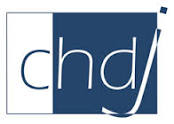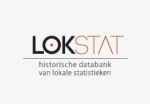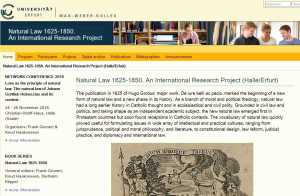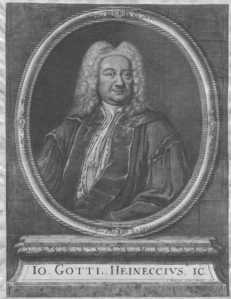On this blog the twin brother of the walking historian is the armchair historian, comfortably seated at his desk in front of a computer screen, with access to a multitude of digitized sources online. Among these sources medieval legal manuscripts, too, are present. The ability to see a source in its original form can be fascinating, although at the same time you need to know about old scripts to read and interpret them correctly. On my website for legal history I mention a number of websites with digitized legal manuscripts, both for medieval law as a general subject and more specifically for medieval canon law. Some of the websites indicated offer solely digitized medieval legal manuscripts. In this post I will look at two digitization projects at the Università di Bologna, Europe’s oldest university, where the teaching of law was for centuries at the very heart of the university.
Progetto Irnerio
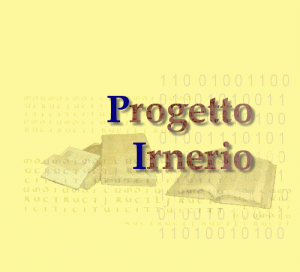
The first project to be discussed is the Progetto Irnerio in which the legal manuscripts at the Collegio di Spagna (Real Colegio de España) in Bologna have been digitized. The collection of manuscripts was started by cardinal Gil de Albornoz (1310-1367) who founded this college in 1364 and gave 36 manuscripts to the library of his new foundation. The college has illustrious people such as Ignatius of Loyola and Miguel Cervantes among its students. In 1992 a team of scholars published a detailed catalogue of the sizeable manuscript collection, I codici del Collegio di Spagna di Bologna, Domenico Maffei, Ennio Cortese, Antonio García y García, et alii (eds.) (Milan 1992) which stressed the rich value of the nearly 300 manuscripts for the study of the history of medieval and early modern law. In 2002 the CIRSFID, the center for the history of law, philosophy and sociology of law and legal information at the Università di Bologna, started the project for the digitization of these manuscripts.
On this project the images of the manuscripts can be viewed in two ways. Subscribers to the project get access to high-resolution images. The snag for non-subscribers is that even when you try to enlarge images the resolution is so low that they are almost useless. The registration includes the signing of a full contract with all kind of stipulations. A restricted number of images can be viewed freely, for anything more one has to pay. It creates the distinct impression one will get access to documents with a priceless value or at least value to create a considerable sum of money out of them. The project was founded with money stemming partially from a foundation created by a savings bank in Bologna, the Fondazione Cassa di Risparmio. The difference between the liberality with which information about the manuscripts is available and searchable at this project, and the strictness of the access to images which can be used for study is questionable – see the postscript for an update .
Progetto Mosaico

For the second project the same center at Bologna cooperates since 2008 with a number of libraries, initially with the Università di Roma Tre and the Università di Napoli, but now also with institutions outside Italy such as the Bayerische Staatsbibliothek in Munich and the ENRICH project for a European digital library of manuscripts, an offspring of Manuscriptorium. In the Progetto Mosaico you will find both descriptions of medieval legal manuscripts and a number of digitized relevant manuscripts. The number of manuscripts with images currently shown is surely not very high.
The first main difference between the Irnerio and Mosaico projects is the presentation of high quality zoomable images at the Progetto Mosaico. Progetto Mosaico offers immediately full access to the manuscript images after agreeing online with the terms and conditions of use. A second substantial difference is the grouping of the manuscripts around a number of subjects. Let’s look at the largest of these groups which focuses on the Authenticum, the medieval collection of Justinian’s Novellae. Not only the Digest but also these constitutions from the sixth century became the object or study only from the twelfth century onwards. At Mosaico 28 descriptions of manuscripts are given and their contents are compared. A further overview graphically shows the slow way the manuscripts with these constitutions were taken into account and described in the first half of the nineteenth century. For four manuscripts images are available (Angers, Bibliothèque Municipale, 333; Bologna, Biblioteca Comunale dell’Archiginnasio, A 132; Florence, Biblioteca Medicea-Laurenziana, sin.7 plu.9; Leipzig, Universitätsbibliothek, Haenel 5).
It is good to have here detailed descriptions of the manuscripts and the texts included in them. It reminds you the text of the Authenticum was transmitted together with other legal texts. Most of the manuscripts described here contain also glosses. In the study by Charles Radding and Antonio Ciaralli, The Corpus Iuris Civilis in the Middle Ages. Manuscripts and transmission from the sixth century to the juristic revival (Leiden, etc., 2007) the earliest medieval manuscripts of the Authenticum figure, too. One of the arguments Radding favors is to consider the possibility of new datations of these manuscripts. In the nineteenth century many manuscripts were ascribed a date which according to the modern knowledge about palaeography and codicology might strongly differ, a century or even more. In principle this could place the start of the renewed interest in Justinian’s compilations and constitutions much earlier, and also in other places. In order to localize and date manuscripts it is very useful to have them together. The online presentation of manuscripts held at many different cities across the world is a most welcome tool to facilitate such inquiries and to probe Radding’s hypotheses.
Among the other manuscripts presented at Mosaico is a focus on legal procedure. One of the results of the study by twelfth-century lawyers of the actiones in Roman law was the creation by Giovanni Bassiano of the so called Arbor actionum, the “Tree of Actions”, a kind of didactic scheme to explain the main differences between legal actions. On the Mosaico website the design of this tree is explained, and two different versions of it are presented. Images are provided from two manuscripts with the vulgate – most common – version, Bamberg, Staatsbibliothek, ms. Can 23, fols. 270v-271r, and Bern, Burgerbibliothek, fols. 61v-62r. A different version has been preserved in three manuscripts, of which Admont, Stiftsbibliothek, 234, fols. 179v-180r, and Bamberg, Staatsbibliothek, ms. Jur. 13, fols. 1v-2r can be viewed at Mosaico. The third manuscript, Leipzig, Universitätsbibliothek, 921, fol. 187v-188r, can be seen at Manuscripta Mediaevalia. In this section you will find also ample references to earlier literature about the arbores actionum.
Mosaico shows that medieval lawyers did not only know the arbores consanguinitatis et affinitatis, about which you can read in two recent blog posts, the first by Jolande Goldberg at In Custodia Legis, the blog of the law librarians of the Library of Congress, the second at Interfaces/Livres anciens de l’Université de Lyon. At this French blog a comment guides you to an online exhibition of the Bibliothèque nationale de France about the symbolic value of the tree in medieval thought with an analysis of the genealogical uses.
The other manuscripts presented at Mosaico concerning medieval legal procedure are Olomouc, Státni árchiv, C.O.40 with the Tractatus quaestionum attributed to Giuliano da Sesso, introduced and transcribed by Lucia Sorrenti, the author of Il “Libellus Quaestionum” di Giuliano da Sesso. Un giurista ghibellino a Vercelli (Messina 1992), and Prague, Knihovna Národního Muzea, XVII.A.10, with the glosses of Roffredus Beneventanus on the Codex Justinianus. For the manuscript Munich, Bayerische Staatsbibliothek, Clm 8011 an introduction and summary description is lacking. In fact only a part of this manuscript is shown (fols. 86r-107v) with quaestiones disputatae in iure canonico by Aegidius de Fuscariis and other jurists.
Presenting medieval manuscripts and texts
One of the interesting aspects at Mosaico is the use of different models for presenting the images and creating space for transcriptions and comments. This makes the project a kind of laboratory for editing manuscripts using online tools. In the absence of agreement among scholars about a general way of describing medieval manuscripts along standards which are also consistent with presentation online using XML, and dealing with both data and meta-data concerning manuscripts, any initiative showing different approaches for one very wide manuscript genre is valuable in itself. The model Susa – after Henricus de Segusio (1190/1200-1271), often nicknamed Hostiensis because he ended his life as cardinal of Ostia – is a simple database for searching manuscripts, with for now perhaps not enough data to consider its functioning properly. The model San Pietroburgo presents data and meta-data in a series of windows with information for each manuscript page.
The model with the tempting name Processo di Satana offers a viewer in which you can compare two manuscripts and add comments and transcriptions. In the late Middle Ages several texts presented the story of a trial of the devil against God claiming human souls. These treatises offer a kind of nutshell guide to forms of procedure at court, and at the same time also a guide to a number of theological matters. At Mosaico you will find the Processus Sathanae contra genus humanum ascribed to Bartolo da Sassoferato (1313-1357). The manuscript tradition of this treatise is the subject of another section, which alas is not complete, but at least you will find an introduction and a provisory list with 43 manuscripts. The list is certainly not complete, but has the distinct merit of noticing the context of the transmission in both juridical and theological manuscripts. You can view images of four manuscripts of Bartolus’ text. Readers of an earlier post here might remember that Bartolus’ treatises have been preserved in many manuscripts. The fourth model Bertram offers images, a classic transcription and commentary by Martin Bertram of the manuscript Montecassino 266 of Goffredo da Trani’s Apparatus decretalium, one of the earliest and most original commentaries on the Liber Extra, the major official decretal collection published in 1234.
It is only fair to indicate that Mosaico offers the result of work in progress. At some turns there is little to desire, at other points progress seems to have halted soon after the start. It is certainly thoughtful of the makers to present the manuscripts from the Biblioteca Comunale dell’Archiginnasio in Bologna also in a separate section, but here, too, an introduction is lacking. Ms. A 34 contains the Processus Sathanae. Ms. B.1484 presents the text of Salatiel’s Ars notariae. Ms. B.2794 and ms. B.2795 are both manuscripts with various legal texts which again are concerned with legal procedure. The first has for example the Margarita legum of Alberico Galiotti, quaestiones by Azo and the Libellus questionum of Pillius and a Summula de libellis formandis atrributed to Salatinus. The second manuscript offers a Libellus de ordine iudiciorum ascribed to Pillius, Guido de Suzaria on the same subject, the Tractatus de summaria cognitione by Giovanni Faseoli, and a number of texts without a clear attribution. The best modern starting point for research on these two manuscripts is no doubt the study by Linda Fowler-Magerl, Ordo judiciorum vel ordo judiciarius. Begriff und Literaturgattung (Frankfurt am Main 1984). The genre of the quaestiones is one of the subjects dealt with by Annalisa Belloni, Le questioni civilistiche del secolo XII: Da Bulgaro a Pillio da Medicina e Azzone (Frankfurt am Main 1989), and in the proceedings of a symposium, Die Kunst der Disputation. Probleme der Rechtsauslegung und Rechtsanwendung im 13. und 14. Jahrhundert, Manlio Bellomo (ed.) (Munich 1997).
A summary of the contents of the twin manuscripts B.2794-2795 is also to be found in the catalogue of the microfilms held at the Istituto di Storia del Diritto Italiano, Sezione di diritto medievale e moderno, in Milan. For medieval manuscripts in Italy one can use online BIBMAN, the Bibliografia dei manoscritti in alfabeto latino conservati in Italia, which helps you finding literature on specific manuscripts, MANUS, the Censimento dei manoscritti conservati in biblioteche italiane, a general database for Italian manuscripts, the Nuova Biblioteca Manoscritta database for manuscripts in the Veneto, and Codex, the Inventario dei manoscritti medievali della Toscana, yet another database for manuscripts. For Lombardy a comparable censimento exists, to mention only the largest regional projects and those projects most relevant for legal history. However, musical manuscripts and Greek palimpsests (Rinascimento Virtuale) are certainly not forgotten in Italy, and you can find more projects in this list at the Scuola Normale Superiore di Pisa and at the portal Internet Culturale. The Vatican Library is anyway in a class of its own, and this is certainly the case for its manuscripts. Searching for manuscripts in Italy bearing a date is possible online with the online version of Manoscritti Datati d’Italia.
Bologna, Alma Mater Studiorum

Near the end of this post it is clear that at Mosaico the door is wide open for studies in the field of medieval legal procedure. The models for presentation merit close scrutiny and further elaboration. The doors of the Progetto Irnerio remain much more closed, an alluring treasure vaguely visible from outside. It is time to put my findings in a perspective, first on the level of medieval legal manuscripts, secondly in the context of other Bolognese libraries and their services.
How do both projects compare with other websites and presentations devoted solely or partially to medieval legal manuscripts? Illuminating the Law is a fine online exhibition of beautiful medieval juridical manuscripts at the Fitzwilliam Museum, Cambridge. However, the exhibition shows only twenty images, almost exclusively from canon law manuscripts. The first images show the tree of consanguinity (Decretum Gratiani, ms. 262, fol. 71r) and the tree of affinity (ms. 262, fol. 71v). From a manuscript with the Volumen parvum which contains Justinian’s Institutiones and the Authenticum (McClean 139, fols. iv-iir), the arbor actionum is shown. Penn in Hand, the gallery of digitized manuscripts at the libraries of the University of Pennsylvania, contains a number of medieval legal manuscripts and records among a very large selection. The UPenn libraries offer only very short descriptions of these manuscripts. The Saint Laurentius Digital Manuscript Library of Lund Universitet, too, contains a number of legal manuscripts, with a full description of all 77 digitized manuscripts. Both Scandinavian law, and texts on Roman and canon law are present. Using the various websites which present illuminated medieval manuscripts one can easily find more images of the legal trees mentioned here.
Libraries and others institutions in Bologna offer more besides the Progetto Irnerio and Progetto Mosaico. The Biblioteca Universitaria has much to offer, including a substantial number of online databases. The link collection gives due attention to legal websites in Italy. In ALMA@DL, the digital library, a whole section is devoted to digitized historical works, AMS Historica. A digital version of the Corpus Iuris Civilis in the edition Lyon 1556-1558 is its showcase. The historical catalogue of the university library has been digitized for the Cataloghi Storici project of the Biblioteca Digitale Italiana. The university’s Archivio Storico is worth attention, too, with historic photographs and its online database in which you can find diplomas, charters, medals and much more. The various colleges are not forgotten, with for example the Collegio Jacobs, nowadays the Collegio dei Fiamminghi.
Bologna is home to more archives. The largest institution is the Archivio di Stato di Bologna (ASB), which has also its own Scuola di archivistica, paleogafia e diplomatica. Among the digitized sources is the Liber Paradisus, a register about the liberation of nearly six thousand slaves at Bologna in 1257. Together with the Centro Gino Fasoli per la Storia delle Città the ASB has created a digital version of the Estimi di Bologna di 1296-97, records estimating the properties of Bolognese citizens. After online registration you get immediate access to the original documents and further information on them, including an overview of similar records, a guide on the structure of the estimi and a bibliography. The Archivio Comunale di Bologna is the city archive. It participates in the initiative of a number of European municipal archives, Evidence! Europe reflected in archives. Other archives include the Archivio Storico Provinciale di Bologna and the Archivio Generale Arcivescovile.
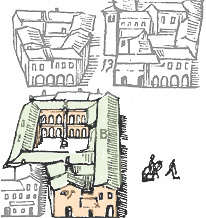
At Bologna the Biblioteca Comunale dell’Archiginnasio is really a jewel in the crown for everyone looking for old printed books and manuscripts. The library has several special catalogues online – for example for seventeenth and eighteenth century printed books – and a full overview of its collections. Archiweb, the digital library, presents a wealth of varieties of which I can hardly make a choice for a shortlist: the Bibliografia bolognese (1888) by Luigi Frati, the Raccolta dei Bandi Merlani with 22,000 digitized decrees and other legislative documents for Bologna from the sixteenth to the nineteenth century, Il Blasone Bolognese, a database with heraldic images created between 1791 and 1795, and FACIES, 10,000 digitized portrait images, are just some highlights you might want to look at when you are going to study Bologna’s legal history. Among the online exhibitions I would like to mention Nascità di una nazione on the Risorgimento period and the creation of a unified Italy.
If you would like to search for medieval lawyers in one of Bologna’s museums, the Museo Civico Medievale, one of the four Musei Civici d’Arte Antica, would certainly live up to your expectations thanks to the collection of medieval tombs, sculptures and inscriptions. In order to find more museums, archives and libraries in Bologna and in the region around Bologna you should benefit from the online guides provided by the Provincia di Bologna. The only institution without a website which nonetheless deserves at least mention here is the Deputazione di Storia Patria per le Provinze di Romagna.
With a comparison of two projects at Bologna presenting medieval manuscripts, reference to some projects elsewhere, and two nutshell guides, both for manuscripts in Italy and for archives, libraries and some museums in Bologna this post has become rather long. It is almost too much of a good thing, but I am sure you will find something of interest. Perhaps the very length of this post is fitting when you write about medieval Bologna. The town had two nicknames, La Dotta, the learned, and La Grossa, the fat one. It’s for you and your taste to file this post in the appropriate category!
A postscript
In 2014 I had a new look at the Progetto Irnerio. It is now possible to get access to images in high resolution. This happy state of affairs changes very much my opinion about the value of this project. At last the treasures of the Collegio di Spagna are accessible at home after only agreeing online to some formalities. Above each search result you can now click a button “Show Hi Res”. In 2012 I failed to mention the bilingual interface of Irnerio, both Italian and English. No more complaints now!





